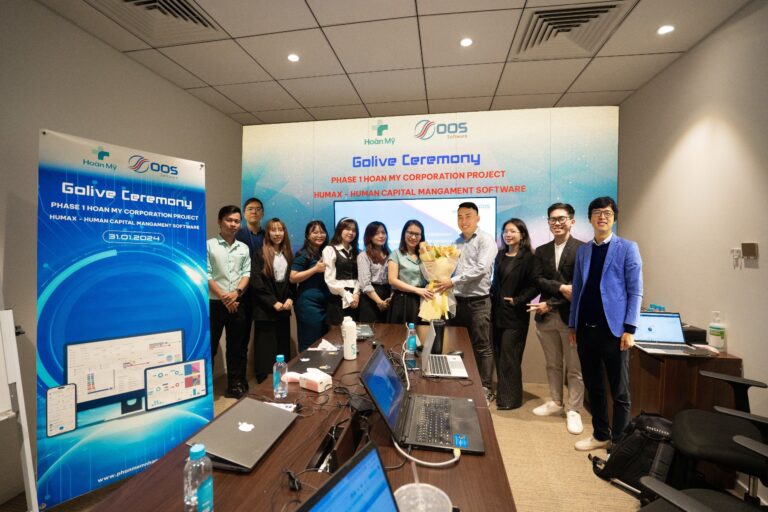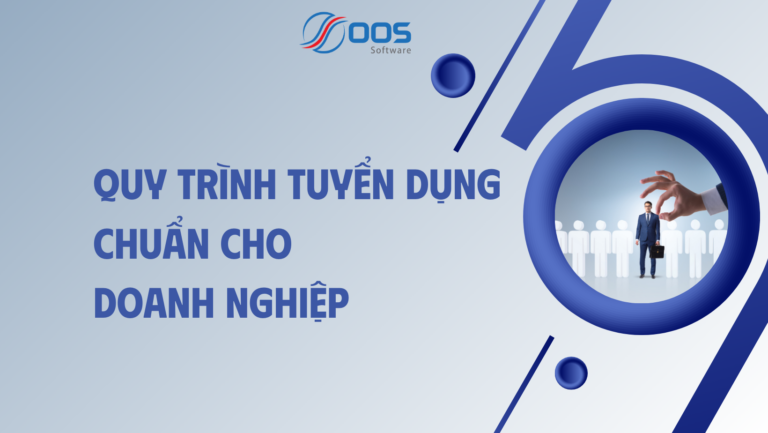Most businesses have to pay a certain amount for onboarding new employees. For large businesses, this is not a small expense. So how do you save money? onboarding costs while still creating a good environment for new employees. Then let's find out with OOS Software and find the right solution.

What are hidden costs?
Implicit cost, imputed cost, implied cost, or notional cost is a cost that is not obvious in the course of implementing an activity and does not need to be reported as a separate cost.
Hidden costs are an important financial decision when allocating company resources. The higher the hidden costs, the more problems businesses will face, the biggest of which is inefficient use of human resources.
From an economic perspective, knowing the hidden costs will help to better calculate the overall economic profit of the company, while the current costs are used for accounting profit purposes. The hidden costs of businesses are not calculated like the current costs, so many businesses do not realize the risk. One way to better understand hidden costs is to consider the problem that any business faces: hidden costs of onboarding New staff.
Onboarding is considered the last step of the recruitment process. The onboarding process is the step that closes the challenges for employees from resume selection, interviewing, testing, from which personnel will be confirmed to be able to work, the first will be the onboarding process.

What hidden costs does onboarding include?
An onboarding process that every employee must go through when entering a new company includes 4 stages:
- Pre-onboarding
- First day on the job
- Probationary period
- Post-trial period.
Pre-onboarding
Cost of documents and procedures
The onboarding process needs quite a lot of documents such as: benefit registration, tax return forms, probationary contracts, confidentiality agreements, etc. The costs for printing, seemingly insignificant papers to declare bill, but these numbers are tangible costs and if the company is large this is not a small number.
The rest of that hidden cost is the time it takes to search for the paperwork to complete and process it. First, employees will start and then departments such as: recruitment, administrative-accounting, finance, etc., are the places that are involved and responsible for that document.
The hiring process and keeping you up to speed means the company has to spend a lot of resources (time and capital). The average cost per new hire is $4,425, and the average operating cost per rental is $14,936, according to SHRM. If you treat each new hire as an investment the company makes, it means that your company's primary goal is to keep you with them for a substantial period of time.

Probationary period
Cost of facilities
During the probationary period, the enterprise must prepare a number of facilities for new employees, such as employee cards, computers, uniforms, etc. These are essential items that the company needs to spend. paid during the probationary period. In addition, many companies in order to create a comfortable and positive environment for employees during the onboarding process also give gifts and welcome parties to motivate them.
Hidden costs of onboarding facilities are not their value but the cost the employee uses during the probationary period. If the company has many employees onboarding at the same time, the increased costs are the costs of the equipment that employees use during that time. In addition, if employees quit midway or are not considered for full-time employees, these costs are wasted.
Work productivity costs
Employees in the probationary period may not be able to meet the company's expectations, so "productivity" costs are also hidden costs of onboarding. A survey of 210 CEOs by Harvard Business School estimated that the typical middle manager needs 6 months to reach breakeven point (BEP). In other words, a middle manager has to work for more than six months for the company to recoup the investment in that hire.

- Usually the first month: The new employee is operating at around 25%, which means the cost of lost productivity is 75% of the employee's salary.
- Week 5 to Week 8: The increase to 50% productivity, with the corresponding cost of 50% employee salary.
- Weeks 9 to 12: During this time frame, employees typically reach productivity rates of up to 75%, at a cost of 25% of the employee's salary.
- After the 12 week mark: Companies can look forward to a new round of hiring for peak productivity.
If the job requirements are complicated, the time it takes for personnel to get acquainted will increase. For example, it takes less time for a new salesperson to break even than a senior management employee. In addition, this number is also affected by the experience of new employees.
The more experienced the candidates, the faster they get used to the workflow, the more natural the transition will be and need less time to adapt. One study also found that it takes an average of 1-2.5% per company to onboard a new employee into the workflow. Therefore, the hidden cost here is the entire cost of training employees to be “strong enough” to bring value to the business.

The stage after getting used to work
At this stage, there will usually be 2 cases after onboarding:
- Personnel are proposed to official positions after the end of the probationary period, accompanying the enterprise in the future.
- During 1-3 months of probationary period, personnel will quit during that period or after it ends.
Cost of onboarding time
If the onboarding process is not too long and the work is simple, most employees will lack the necessary knowledge and skills to work professionally. On the contrary, if the onboarding is too long, the new core will get bored and do not want to continue. This means that if the onboarding process doesn't feel productive and takes too long, it's the company's time-wasting or "opportunity cost" loss.
Expenses when employees quit
Perhaps the biggest concern that employee turnover presents is the financial cost of hiring and training new employees to replace those employees. In spite of hidden costs of onboarding The exact costs of employee leave vary, but those costs have been greatly inflated.
Some studies predict that every time a business replaces a salaried employee, it will cost an average of 6 to 9 months' salary. For a manager making $60,000 a year, that's $30,000 to $45,000 in hiring and training costs. However, revenue seems to vary by employee salary and role.

Eg:
$1,500 for hourly employees.
100 to 150% salary of an employee for technical positions.
Up to 213% of an employee's salary for C-suite positions.
In an article on employee retention, Josh Bersin of Bersin by Deloitte analyzed the main factors that lead to the cost of losing an employee. The costs that businesses consume when new employees leave are shown through the following costs:
- Recruitment cost: The money it takes to recruit a new employee includes advertising, interviewing, screening, and hiring.
- Joining cost: Onboarding costs introduce a new person, namely the time it takes to train and manage.
- Productivity cost: It takes 1-2 months for a new employee to be as productive as a probationary employee.
- Disconnected: Other employees who see high turnover tend to leave their jobs and lose their productivity.
- Customer service and flaws: New employees take longer to get their work done and are often less adept at problem solving.
- Training costs: In two to three years, a business is likely to invest between 10% and 20% an employee's salary or more in training.
- Cultural impact: When an employee quits, others will wonder and be affected.
The reason why costs for employees is not obvious is that it is not important for most companies to keep track of the costs of finding, selecting, interviewing and recruiting employees; orientation, training and administrative costs, .... throughout the employee's employment. In fact, departments such as human resources, finance, operations, etc. all have their own measurement and reporting mechanism. To avoid the loss of recruitment budget, it is necessary to carefully control this cost stream.

How to minimize the hidden costs of onboarding for businesses?
For paperwork costs
Standardize the paperwork process
In order to help employees have an overview of the working process, the company should make available the necessary procedures to support personnel. The information includes contact person, support place, next steps in the process, etc. so that the candidate does not feel confused.
Digitization of documents is possible
Enterprises should digitize documents such as company policies, departmental policies, training programs, competency assessment sheets, etc. To facilitate employees to look up information, businesses should have a library of letters. electronic library for archiving. Thus, finding information is easy without taking much of everyone's time. Thus, the human resources department also saves a lot of effort.
Require new employees to complete their paperwork before the start date
If this is followed, employees also spend less time filling out paperwork, instead having more time to hone their knowledge.
For facility usage costs and employee exit costs
When employees quit, there will be many risks for the business. Therefore, the only way to overcome this situation is to minimize the rate of employee turnover. This requires businesses to make the most of their ability to retain people.

Strong corporate culture
A professional and good corporate culture will make employees want to work longer. Therefore, building a corporate culture is extremely important for any company.
Selecting the right person
In addition to paying attention to the ability and ability to accept work, the important thing that we should pay attention to is the working attitude. Recruiting employees who are able to accept the new environment, sociable and responsible is extremely important. Because it will help both employees and employers not to waste their own time.
Provide guidance and in-depth training for employees
High-performing employees tend to want to learn to improve and develop more. To retain employees, businesses need to take measures to help employees be flexible in their current work. Make sure they have options for higher positions and gain more experience. Businesses should also pay attention to the productivity of each employee. Good employees always have a constant need to learn and advance. To meet this, businesses need to have measures to motivate employees better.
Diversify employee benefits
Attractive salary and bonus policies have the effect of retaining talent. In addition, incentive policies that exceed performance, flexible leave, remote work or gift ideas without money also help businesses "score" in the hearts of candidates. There should be clear and attractive reward policies to attract employees to stay. In addition, policies to reward when exceeding productivity are also good ideas.

For employee time and productivity costs
Choose online training
An easy way to reduce training costs per employee is to opt for online training. Online learning costs one-third to one-fifth the cost of traditional instructor-led classroom training.
This is because it eliminates countless direct and indirect costs – time, travel, accommodation, meals, room rental just to name a few. IBM saved $200 million using technology-based learning.
Leverage microlearning
Employee training is often time consuming. And the longer the training, the more you drive people away from work.
Microlearning is a learning mechanism whereby learning is delivered in small, moderately sized chunks of 2-5 minutes to capture the technological expectations and attention span of the modern learner. Not only is it built to appeal to the modern worker, thus surpassing conventional training methods, but it also takes a fraction of the time to complete.
With tools like eduMe, employees get relevant information in a short amount of time when they need it, in a way that perfectly matches the 'workflow' i.e. the rhythm of their workday. This will help us track the quality of work that employees have done to make appropriate adjustments.

Above is the article OOS Software introduces to readers onboarding costs What are hidden costs. With the above useful and detailed information, hopefully businesses can find useful directions for themselves. If you want to know more useful information about business management, please visit the website of OOS Software.























